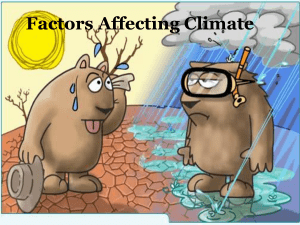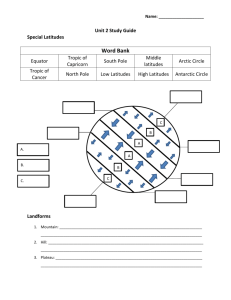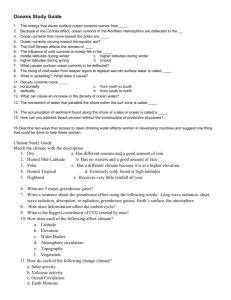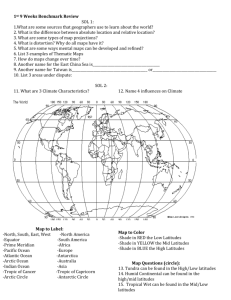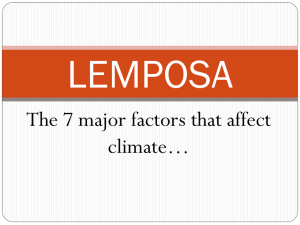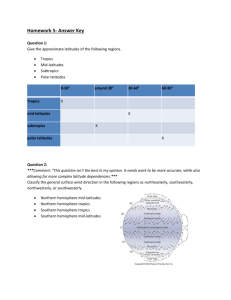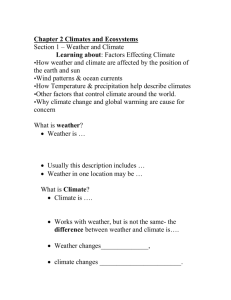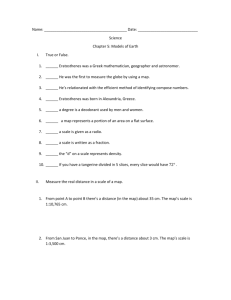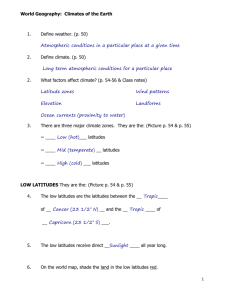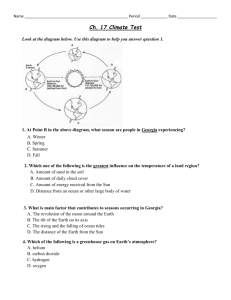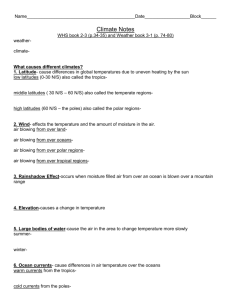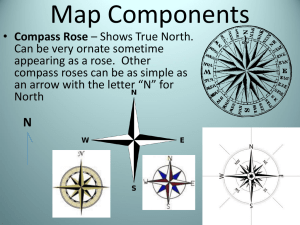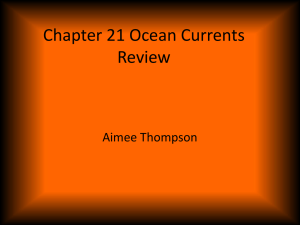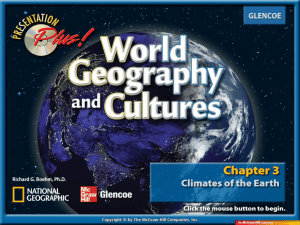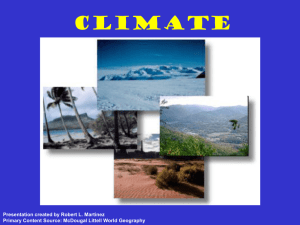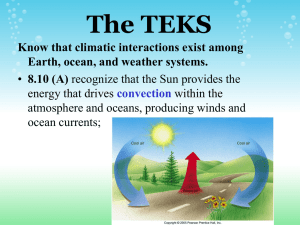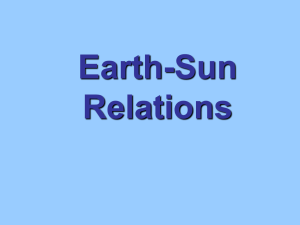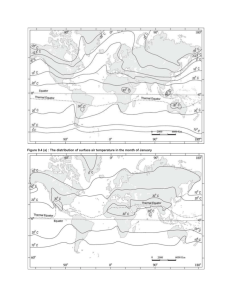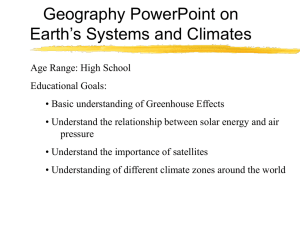File
advertisement
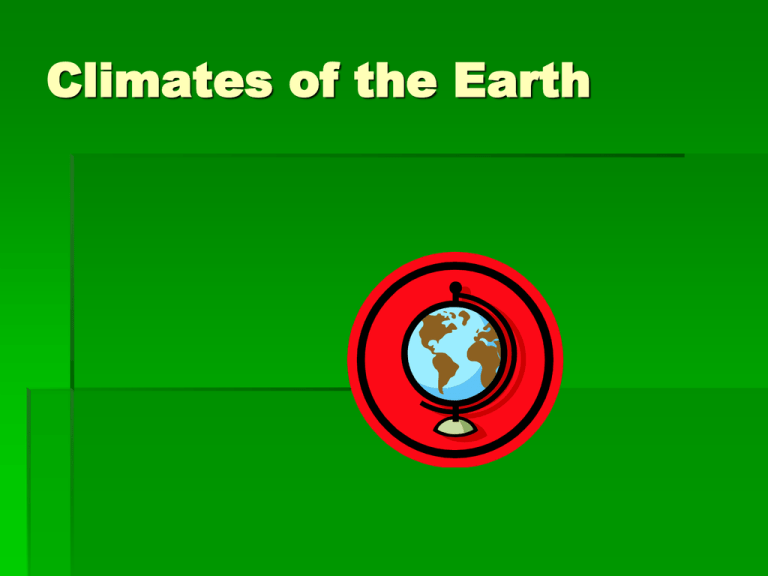
Climates of the Earth Factors Affecting Climate • Discuss how latitude and elevation affect climate. • Describe the role wind patterns and ocean currents ply in Earth’s climates. • Explain how landforms and climate patterns influence each other. Latitude and Climate • Low Latitudes The low latitudes are between the Tropic of Cancer and the Tropic of Capricorn. Portions of the low latitudes receive direct sunlight yearround. • High Latitudes The high latitudes are the polar areas. They receive continuous but indirect sunlight for six months each year, and the climate is always cold. Latitude and Climate • Mid-Latitudes The mid-latitudes are the zones between the Tropics and the polar areas. They have a temperate climate ranging from fairly hot to fairly cold, with dramatic seasonal changes. Elevation and Climate • The higher the altitude of a place, the colder its climate will be. • At high altitudes, the air is thinner and retains less heat. Wind and Ocean Currents • Wind Patterns Prevailing winds, global winds that blow in fairly constant patterns, are affected by the direction of the earth’s rotation and latitude. The trade winds of the tropics blow diagonally toward the Equator. • The westerlies of the mid-latitudes blow diagonally from west to east. • The polar easterlies of the high latitudes blow diagonally from east to west. Wind and Ocean Currents • The Horse Latitudes At the Equator is a narrow, generally windless band called the doldrums. • Just north and south of the Tropics are other narrow bands of calm air. • In the past, wind-powered sailing ships were in danger if they were stranded in these windless areas. • To lighten their vessels in order to take advantage of any breeze, livestock were thrown overboard, which accounts for the name horse latitudes. Wind and Ocean Currents • Ocean Currents Ocean currents move warm and cold water just as winds move warm and cold air. • Weather and the Water Cycle A drop in temperature causes the water vapor in the atmosphere to form clouds and eventually to condense and fall as rain or snow. Landforms and Climate • Earth’s surface features, such as mountains and bodies of water, can affect and be affected by climate. • Large bodies of water are slower to heat and cool than land, so bodies of water tend to moderate coastal land temperatures. • When wind meets a mountain range, it is forced upward. Landforms and Climate • This rising air cools and brings precipitation to the windward side (the side facing the wind) of the range. • After the rain falls on the windward side, the air is warmer and drier as it descends on the leeward side (the side facing away from the wind) of the mountain range. • Areas on the leeward sides of mountains receive little precipitation and are often very dry because of this rain shadow effect. Analyzing Maps Location Study the map below. Where are the high latitudes located? Analyzing Maps The high latitudes are located in polar areas. Applying Geography Movement of Ocean Currents Study the map below. If your ship were drifting from west to east in the Equatorial Countercurrent, what might happen as you drifted past longitude 120ºW? The ship would reverse its direction and drift from east to west with the North Equatorial current. Chapter 3 Class Notes Chapter 3 Class Notes Chapter 3 Class Click the mouse button orNotes press the Space Bar to display the answer.

